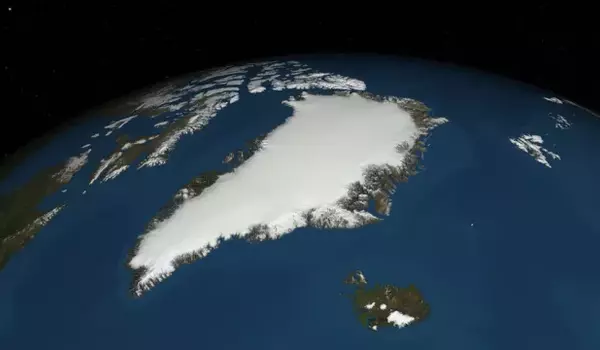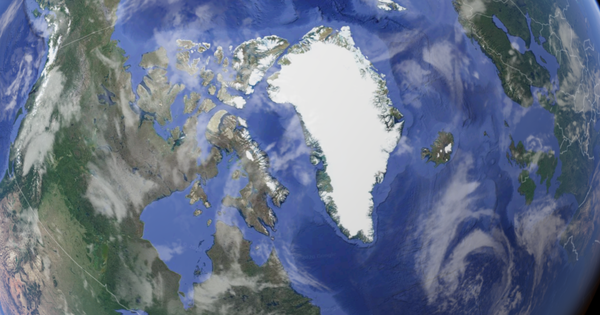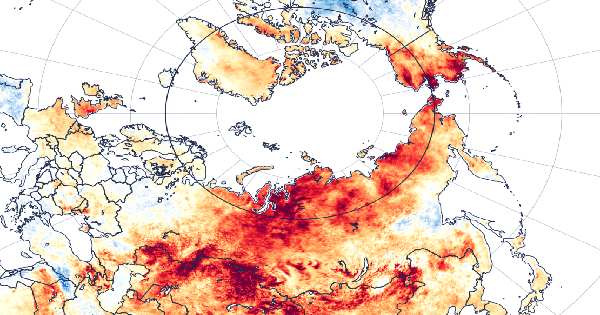Global warming refers to the long-term increase in Earth’s average surface temperature due to human activities, primarily the burning of fossil fuels, which releases greenhouse gases into the atmosphere. These gases trap heat from the sun, warming the planet.
Central Greenland is experiencing the effects of global warming, including melting ice and rising sea levels. The ice sheet in Greenland is melting at an accelerating rate, contributing to sea level rise. This has the potential to have significant impacts on coastal communities and infrastructure around the world. It also contributes to changes in regional weather patterns and ocean circulation.
A temperature reconstruction based on ice cores from the last 1,000 years reveals that today’s warming in central-north Greenland is surprisingly pronounced. According to researchers, the most recent decade studied, 2001 to 2011, was the warmest in the past 1,000 years, and the region is now 1.5 °C warmer than during the twentieth century. They reconstructed past temperatures in central-north Greenland and ice sheet melting rates using a set of ice cores unprecedented in length and quality.
The years 2001 to 2011 were 1.5 degrees Celsius warmer than the previous century at high elevations of the Greenland Ice Sheet, making them the warmest decade in the last thousand years.
A temperature reconstruction from ice cores of the past 1,000 years reveals that today’s warming in central-north Greenland is surprisingly pronounced. The most recent decade surveyed in a study, the years 2001 to 2011, was the warmest in the past 1,000 years, and the region is now 1.5 °C warmer than during the 20th century, as researchers led by the Alfred Wegener Institute just report in the journal Nature. Using a set of ice cores unprecedented in length and quality, they reconstructed past temperatures in central-north Greenland and melting rates of the ice sheet.
The time series we recovered from ice cores now continuously covers more than 1,000 years, from year 1000 to 2011. This data shows that the warming in 2001 to 2011 clearly differs from natural variations during the past 1,000 years. Although grimly expected in the light of global warming, we were surprised by how evident this difference really was.
Dr. Maria Hörhold
The Greenland Ice Sheet is critical to the global climate system. With massive amounts of water stored in the ice (approximately 3 million cubic kilometers), melt and resulting sea-level rise is regarded as a potential tipping point. Under unabated global emissions rates (‘business as usual,’ the ice sheet is expected to contribute up to 50 centimetres to global mean sea-level rise by 2100.
For many years, weather stations along the coast have recorded rising temperatures. However, the impact of global warming on the ice sheet’s up to 3,000 m elevation has remained unknown due to a lack of long-term observations. In a study now published in Nature, experts from the Alfred Wegener Institute, Helmholtz Centre for Polar and Marine Research (AWI) present clear evidence that effects of global warming have reached the remote, high-elevation areas of central-north Greenland.
“The time series we recovered from ice cores now continuously covers more than 1,000 years, from year 1000 to 2011. This data shows that the warming in 2001 to 2011 clearly differs from natural variations during the past 1,000 years. Although grimly expected in the light of global warming, we were surprised by how evident this difference really was,” says AWI glaciologist Dr. Maria Hörhold, lead author of the study. Together with colleagues from AWI and the University of Copenhagen’s Niels Bohr Institute, she analyzed the isotope composition in shallow ice cores gathered in central-north Greenland during dedicated AWI expeditions.
Previous ice cores obtained at co-located sites starting in the 1990s, did not indicate clear warming in central-north Greenland, despite rising global mean temperatures. Part of the reason is substantial natural climate variability in the region.

A dedicated redrilling effort by the AWI researchers has now extended the previous datasets up to winter 2011/2012, recovering time series of unprecedented length and quality. Temperatures were reconstructed in the lab by using a consistent single method for the entire record: measuring concentrations of stable oxygen isotopes within the ice, which vary with temperature at the time of ice formation. Previous studies had to use a variety of different climate archives and combine the results to reconstruct temperature, which introduced much larger uncertainties in the assessment of natural variability.
In addition to the temperature, the team reconstructed the melt production of the ice sheet. Melting has increased substantially in Greenland since the 2000s and now significantly contributes to global sea-level rise. “We were amazed to see how closely temperatures inland are connected to Greenland-wide meltwater drainage – which, after all, occurs in low-elevation areas along the rim of the ice sheet near the coast,” says Maria Hörhold.
The authors used data from a regional climate model for the years 1871 to 2011 and satellite observations of ice-mass changes from the GRACE/GRACE-FO gravimetry missions for the years 2002 to 2021 to quantify this link between high-elevation temperatures and melting along the ice sheet’s edges. This enabled them to convert temperature variations found in ice cores into melting rates and provide estimates for the previous 1,000 years. This is an important dataset for climate research because a better understanding of the ice sheet’s melt dynamics in the past improves projections of related future sea-level rise; reducing uncertainties in projections is one step toward optimizing adaptation measures.
Another intriguing finding from the study: the Greenland Ice Sheet’s climate is largely disconnected from the rest of the Arctic. This could be demonstrated by comparing it to the ‘Arctic 2k’ temperature reconstruction of the Arctic. Although ‘Arctic 2k’ accurately represents the circumpolar region, it does not accurately represent the conditions in central Greenland. “Our reconstruction now provides a robust representation of temperature evolution in central Greenland, which has proven to have its own dynamic,” says Prof. Thomas Laepple, an AWI climate researcher and study co-author.
“In fact, we had expected the time series to strongly correlate with Arctic warming,” Laepple says. The authors, however, have an explanation for these differences: Greenland’s ice sheet is several kilometers thick; due to its elevation, it is more affected by atmospheric circulation patterns than other parts of the Arctic. Temperature time series on the Arctic with regional resolution are required, according to Laepple, to accurately describe climate change in the Arctic.
















